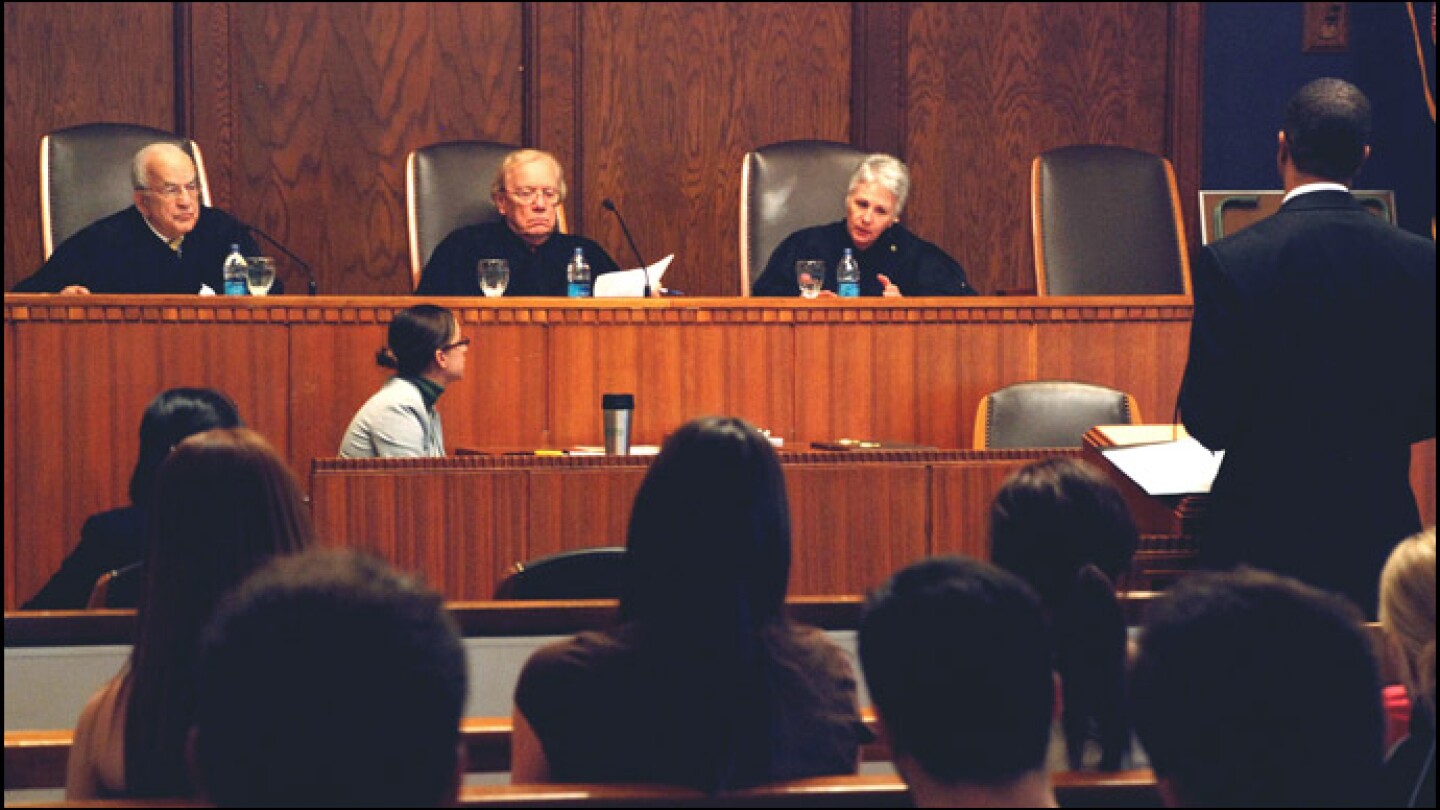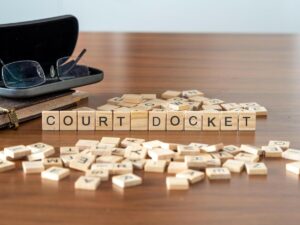What is a Motion in Court?
A motion is a procedural device used by litigants (parties to a case) to request a court to make a specified ruling or order. Motions may be made at various stages of legal proceedings and for a wide variety of purposes. Generally, a motion asks the court to take a particular action – such as dismissing a case, excluding evidence, granting summary judgment, or ordering a new trial.
Motions are an important part of the legal process as they allow parties to raise arguments and have their concerns addressed by the court. They help shape the course of litigation and influence the ultimate outcome of a case. Understanding what motions are, how they are used, and the procedures for filing and opposing them is essential for any litigant or attorney.
What is a Motion?
The motion will describe what ruling or relief is sought from the court and outline the legal grounds that support the request. Key details like relevant facts, applicable laws, legal standards, and procedural issues will be discussed. Essentially, a motion urges the court to take some type of action related to the case.
Why Are Motions Used in Court?
There are several important reasons motions are frequently used during the course of legal proceedings:
- Raise arguments – Motions allow parties to raise arguments and have their legal issues heard by the court. This gives each side a chance to advocate for their positions.
- Resolve disputes – Many motions involve disputes between parties about the conduct of the case. Filing a motion prompts the court to resolve the disagreement.
- Influence the case – Motions shape the trajectory of the case by seeking rulings that can dismiss claims, exclude evidence, impose sanctions, and otherwise impact the procedures and outcome.
- Advance litigation – Certain motions must be ruled on to advance the case, like motions for summary judgment before a trial date can be set.
- Preserve legal rights – Parties have to raise certain arguments promptly via motion to avoid waiving their rights to raise them later.
Overall, motions keep cases moving forward while allowing parties to raise concerns, resolve differences, influence the proceedings, and assert their legal rights through court intervention along the way.
Types of Motions in Court
Motions can be categorized based on the stage of litigation when they are filed: pre-trial motions, trial motions, and post-trial motions.
Pre-Trial Motions in Court
Pre-trial motions are filed after a lawsuit is commenced but before the trial itself begins. They aim to resolve disagreements between parties about procedural rules, legal theories, factual issues, and scope of trial.
Common pre-trial motions include:
- Motions in limine – Ask the court to exclude prejudicial evidence from being introduced at trial.
- Motions to dismiss – Argue that a claim or entire case should be dismissed for legal deficiencies.
- Motions for summary judgment – Assert there are no genuine factual disputes and judgment can be entered without a trial.
- Motions to compel discovery – Request the court to order disclosure of materials or answers to deposition questions.
Trial Motions in Court
Trial motions arise during the course of a trial, which is the court proceeding where evidence is presented and legal and factual issues are decided. They deal with evidentiary, procedural, and substantive issues that come up as the trial progresses.
Examples include:
- Motions for judgment – Argue that the plaintiff has failed to present sufficient evidence for a reasonable jury to find for them.
- Motions for directed verdict – Request the court to rule in favor of one party without sending the case to the jury because the evidence dictates that outcome.
- Motions to strike testimony – Seek to have improper witness testimony stricken from the record and disregarded.
Post-Trial Motions in Court
Post-trial motions are filed after the conclusion of a trial. They seek to contest or challenge the verdict and request remedies like judgment in the movant’s favor or a new trial.
Post-trial motions include:
- Motions for judgment notwithstanding the verdict – Argue that the jury’s verdict was erroneous and should be reversed.
- Motions for new trial – Assert that errors or irregularities occurred during the trial that prejudiced the movant and warrant a new trial.
The Motion Process in Court
A motion involves a series of steps and procedures that must be followed for it to be properly filed, considered, and ruled upon.
Filing the Motion
The first step is drafting and filing the motion. The rules of civil procedure for the relevant jurisdiction set forth formatting requirements, deadlines for different types of motions, page limits, and other filing instructions.
Properly filing the motion puts the request before the court. The movant must promptly serve copies on all other parties. Opposing parties will then have an opportunity to file a response.
what happens after a motion is filed in court
Responding to the Motion
After being served with a motion, opposing parties have a limited time (often 2-3 weeks) to file a response, which outlines their objections and arguments against the motion. Responses argue that the motion lacks legal merits or relies on incorrect facts.
If allowed by the court rules, the movant may file a reply to rebut arguments made in the response. This completes the motion briefing process.
Hearing vs. Non-Hearing Motions: The Court’s Decision
One crucial aspect of motions is whether they require a hearing or not, a determination usually made by the presiding judge on a case-by-case basis. Parties involved in the lawsuit may request a hearing if they believe it’s necessary.
For non-hearing motions, the court bases its decision solely on written submissions, which include memoranda or briefs, along with supporting affidavits, documents, and evidence submitted up to that point. In contrast, hearing motions entail attorneys appearing before the court to argue their case, alongside submitting written materials. Following both hearing and non-hearing motions, the court issues its ruling, sometimes accompanied by a written explanation of its decision-making process.
Court’s Ruling on the Motion
After considering the motion papers and arguments at the hearing, the judge will issue a ruling. This can occur at the hearing or through a written order later.
The court can grant the motion, deny it, or grant it in part and deny it in part. Some motions may be granted conditionally or with modifications from what was requested. Once ruled upon, the court’s decision is binding unless successfully challenged on appeal.
Strategic Use of Motions
Motions allow parties to advance their interests strategically beyond just seeking substantive relief. Well-timed motions can help shape the case’s progress.
Motions to Influence Settlement
The parties often engage in settlement talks to avoid trial. Crafting convincing motions on key issues may induce the other side to re-evaluate the merits and make reasonable settlement offers. Even if denied, bold motions signal commitment to legal positions.
Motions to Educate the Judge
Since the judge will be the key decision-maker, motions educate the judge on the movant’s perspective early on. Forceful motion practice helps build credibility.
Motions to Set Precedent
Bringing issues to the fore via motions creates opportunities to establish favorable precedent on disputed legal questions that may have broader impacts beyond the individual case.
Eleven Types of Legal Motions in U.S. Law
When navigating the intricate landscape of U.S. law, understanding the various legal motions is essential. A motion is a formal request made by a party involved in a legal dispute to the court or judge, asking for a specific action or decision. Legal motions play a pivotal role in the American justice system, as they allow for the resolution of controversial or disputed issues within a case efficiently. These motions are employed at different stages of a trial, including before it begins, during its proceedings, and even after a verdict has been reached. In this article, we’ll explore eleven types of legal motions that are not only common but also vital to individual cases.
1. Motion to Dismiss
A motion to dismiss, colloquially known as “throwing out” a case, is typically filed by one party, usually the defendant, when they argue that the plaintiff’s claim is not a legal matter that the court can rule upon. Unlike other motions, in a motion to dismiss, the moving party doesn’t contest the facts presented by the opposing party. Instead, they assert that the claim in question lacks legal merit. This motion helps prevent cases without legal issues from wasting the court’s time and resources. It may also be filed if the statute of limitations has expired, the defendant has been granted immunity or a pardon, or if the defendant has faced previous trial for the same offense, known as double jeopardy.
2. Discovery Motions
During the discovery process, both parties in a lawsuit gather information and evidence to build their respective cases. This phase aims to unveil all the facts relevant to the case. Various motions, including motions to compel, come into play if one party fails to respond to a request for information or provides vague or incomplete responses. Failing to comply with these motions can result in contempt of court charges.
3. Motion to Compel
A motion to compel is a request for the court to use its authority to force a party to take an action they have refused to undertake. This type of motion can be employed during the discovery process or during the trial itself, such as when a witness refuses to answer a question while testifying.
4. Motion to Strike
A motion to strike is filed when one of the parties wishes to remove specific information or language from the court record. Typically, this motion is requested if the content in question is not admissible evidence, is redundant, vague, scandalous, immaterial, or impertinent.
5. Motion for Summary Judgment
A motion for summary judgment is frequently utilized before a trial begins. It seeks a judgment from the judge without going through a full trial, under the condition that no material facts of the case are disputed. It can save time and money for both parties when used appropriately.
6. Motion for a Directed Verdict
Similar to a motion for summary judgment, a motion for a directed verdict is made by the defense after the prosecution has presented its case. It asserts that the prosecution has failed to prove its case to such an extent that the defense need not present any evidence.
7. Motion for Nolle Prosequi
In instances where the prosecution cannot prove its case or new evidence surfaces, the prosecution may request a motion for nolle prosequi. This motion essentially asks the judge to dismiss the case because of the defendant’s innocence or insufficient evidence.
8. Motion in Limine
A motion in limine focuses on the admissibility of evidence presented to a jury during a trial. It ensures that potentially prejudicial evidence is not exposed to the jury, preserving the defendant’s right to a fair trial.
9. Motion for Judgment N.O.V.
A motion for judgment n.o.v. (non-obstante veredicto) is made after the jury delivers its verdict. Filed by the defendant, it asks the judge to reverse the jury’s verdict when there are no reasonable grounds for the verdict reached.
10. Motion to Set Aside Judgment
A motion to set aside judgment can be filed after a judgment or verdict has been issued. This motion aims to nullify or vacate a previously reached judgment or verdict, typically due to newly discovered evidence that casts doubt on the original outcome.
11. Motion for a New Trial
A motion for a new trial can be submitted by either party after a verdict has been delivered. It is used when a significant error during the trial necessitates a fresh trial, though it doesn’t guarantee a different verdict.
In the intricate world of U.S. law, motions are indispensable for ensuring the proper administration of justice. They help define the parameters of a fair trial and rectify errors that could lead to wrongful convictions. While various types of motions exist, those outlined above are among the most common and pivotal. These motions collectively contribute to the efficiency and integrity of the American justice system.
Conclusion
- Motions are procedural devices parties in a lawsuit use to request court action or rulings.
- Motions aim to raise arguments, resolve disputes, influence the case, advance litigation, and preserve rights.
- Motions are made at pre-trial, trial, and post-trial stages.
- Procedurally, motions must be filed, responded to, heard, and ruled upon.
- Strategic motion practice can shape the course of a case through impacts on settlement, educating the judge, and setting precedent.
Understanding motion practice is invaluable for any party or attorney involved in litigation. Motions move the case forward while allowing advocates to advance their positions on substantive and procedural issues at every stage.
FAQs
What is the difference between a motion and a petition?
A motion is filed within an existing case while a petition commences a new, independent case. Motions raise specific issues asking the court to rule on a narrow question or grant a particular kind of relief within the framework of the pending case. Petitions initiate a new legal action by stating claims and requesting relief.
How much does it cost to file a motion?
The cost to file a motion typically consists of court fees and attorney time spent preparing the motion. Fees may range from $30 to over $200 depending on the court and type of motion. Attorney time can cost hundreds or thousands of dollars for more complex motions. Cost awards to the prevailing party are also possible.
Can a motion result in dismissal of a case?
Yes, certain motions, if granted, can result in a case being entirely dismissed. For example, motions to dismiss for lack of jurisdiction, motions to dismiss for failure to state a claim, and motions for summary judgment can all end up dismissing a plaintiff’s case. Even if not dismissed entirely, motions can get individual claims thrown out.
Can you appeal a judge’s ruling on a motion?
Many motion rulings are interlocutory, meaning they are not final case-ending orders. Interlocutory orders generally cannot be appealed immediately. But if the motion ruling is case-dispositive or relates to an injunction, it may be appealable right away. Most other adverse motion rulings can be appealed after a final judgment is entered in the case.
Are there limits on how many motions you can file?
Courts can limit excessive or frivolous motions. While parties are entitled to file motions advancing legitimate arguments, federal and local rules deter filing the same motion repeatedly or using motions just to harass the opponent and delay proceedings. Courts also impose page limits and may prohibit last-minute motions close to trial.







